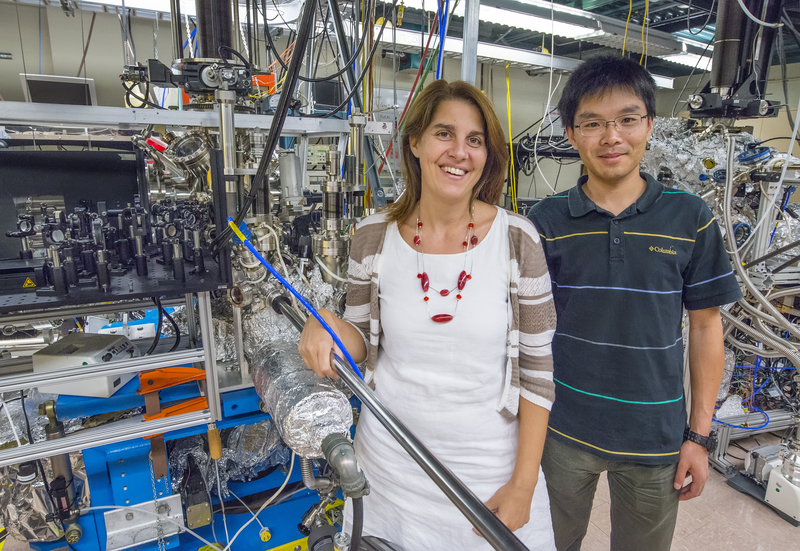 Alessandra Lanzara and Wentao Zhang used time- and angle-resolved photoemission spectroscopy (trARPES) to demonstrate a link between electron-boson coupling and high-temperature superconductivity in a high-Tc cuprate. (Photo by Roy Kaltschmidt)
Alessandra Lanzara and Wentao Zhang used time- and angle-resolved photoemission spectroscopy (trARPES) to demonstrate a link between electron-boson coupling and high-temperature superconductivity in a high-Tc cuprate. (Photo by Roy Kaltschmidt)
Researchers at Berkeley Lab have used time- and angle-resolved photoemission spectroscopy (trARPES) to measure coupling of electron-boson and high-temperature superconductivity. Ultrafast spectroscopy helps understand the interaction of electrons and atoms with ultra-short light pulses.
The trARPES technology helped measure the rapid response of electron self-energy to photo-excitation with near-infrared light in a superconductor at high temperature. The response of electron self-energy is considered as a basic quantity for illustrating “many-body” interactions. The experiments revealed the link between superconductivity and electron-boson coupling.
Bosons could be force-carrying particles or composite matter particles. In the experiment, when superconductors were below their critical temperature, the rapid excitations caused synchronous decrease in the superconducting energy gap and the electron self-energy. This continued until the gap was closed. However, when the superconductor was above its critical temperature, the coupling of the electron–boson did not respond to the ultrafast excitations. The findings of this study may help study correlation effects and transient self-energy in solid materials.
Researchers have preferred to use the ARPES technique for analyzing a material’s electronic structure. This technique involves using beams of light – either X-ray or ultraviolet – to strike a sample material’s surface. This causes electron photoemission at angles. The kinetic energies involved can be measured and they provide data about the electronic band structures of the material. However, the necessary temporal component that is needed for analyzing the band structural dynamics cannot be provided by ARPES.
In the trARPES study, the Berkeley Lab research team included the temporal component that was required. The new technique was applied to Bi2212 material, which is considered to be promising for high-temperature superconductors. This material is a compound of bismuth, copper oxide, calcium and strontium. The researchers used femtosecond pulses of near-infrared laser light to energize the material samples and then used femtosecond pulses of ultra-violet laser light to probe the results. They controlled the delay time between the pump pulses and the probe pulses, and this enabled tracking of the superconducting gap and the electron-boson coupling simultaneously. The study showed that a known kink in the pattern of photoemission in Bi2212 cuprate materials is linked to superconductivity.
This study has been published in Nature Communications.
References